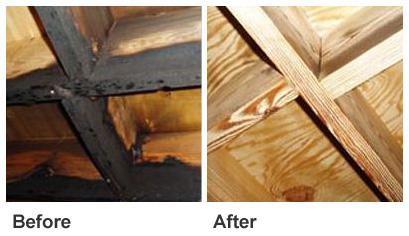Fire and Ice: How Dry Ice Can Help You Recover After a Fire
Cleaning up after a fire can include damage related to soot, char, vaporized synthetic resigns, and smoke. All of these things can be a daunting task to clean up and is often left to the insurance companies or other professional cleaning agencies. Dry ice blasting, or CO2 blast cleaning, has become an increasingly common method to clean up after fires in buildings for a number of reasons. It is the ideal restoration medium for all types of materials, ranging from wood, concrete, to brick, leaving little to no damage to the recovered surface and getting the job done quickly!
Restoration Options
More traditional fire restoration methods include things like sandblasting, sanding the damaged wood, or soda and chemical based sprays. All of these methods will often times leave a residue behind and are generally unable to remove any smoke smell trapped inside. Dry ice blasting, on the other hand, leaves no residue, doesn’t require clean-up, and will remove the smoky smells.
Dry ice blasting is still abrasive and strong enough to remove most anything from the surface you are cleaning, but gentle enough to leave the original structure undamaged. It will not scratch the surface like many other chemical or sand based blasting techniques. Dry ice blasting will simply recover the material to the original state. There is no clean-up involved after using dry ice when used to restore a surface after fire damage because dry ice sublimates upon contact. It is safe for the user since there are no harsh chemicals involved to create hazardous fumes, which makes the use of dry ice safe for the environment as well.
Many professionals are now turning to dry ice blasting for projects as tedious and time-consuming as fire restoration. Using dry ice blasting will often be 3-5 times faster than the more traditional methods, and it will get rid of the smoky smells within 24 hours after the cleaning has occurred. Dry ice blasting allows for a faster restoration process with less clean-up while being safer for the structure, user, and the environment. It will allow for a deeper clean in tight spaces and cracks left behind by fire to make it easier to inspect and be repaired.
Since fire restoration can be an extremely time-consuming DIY task with many factors involved, it is important to first know if your structure simply needs to be cleaned and restored or if it will need to be replaced altogether. If there is extensive charring, many professionals will use dry ice blasting to remove the char without further compromising the structure. This method allows for a more thorough inspection of the damage to determine which restoration steps to take next.
With all of that in mind, consider using dry ice blasting in any of your restoration projects. It is a safe and efficient method to clean up after a fire, and can be used to a number of other cleaning tasks as well.

